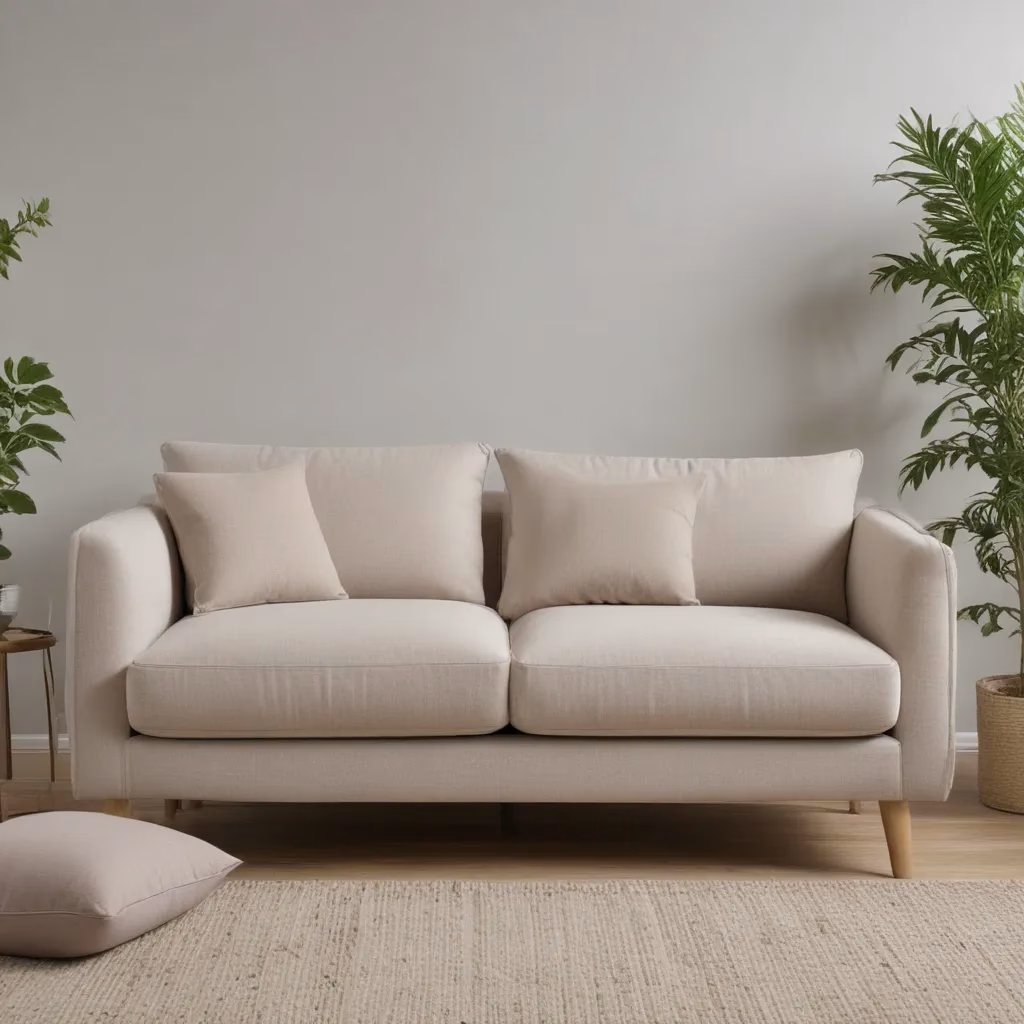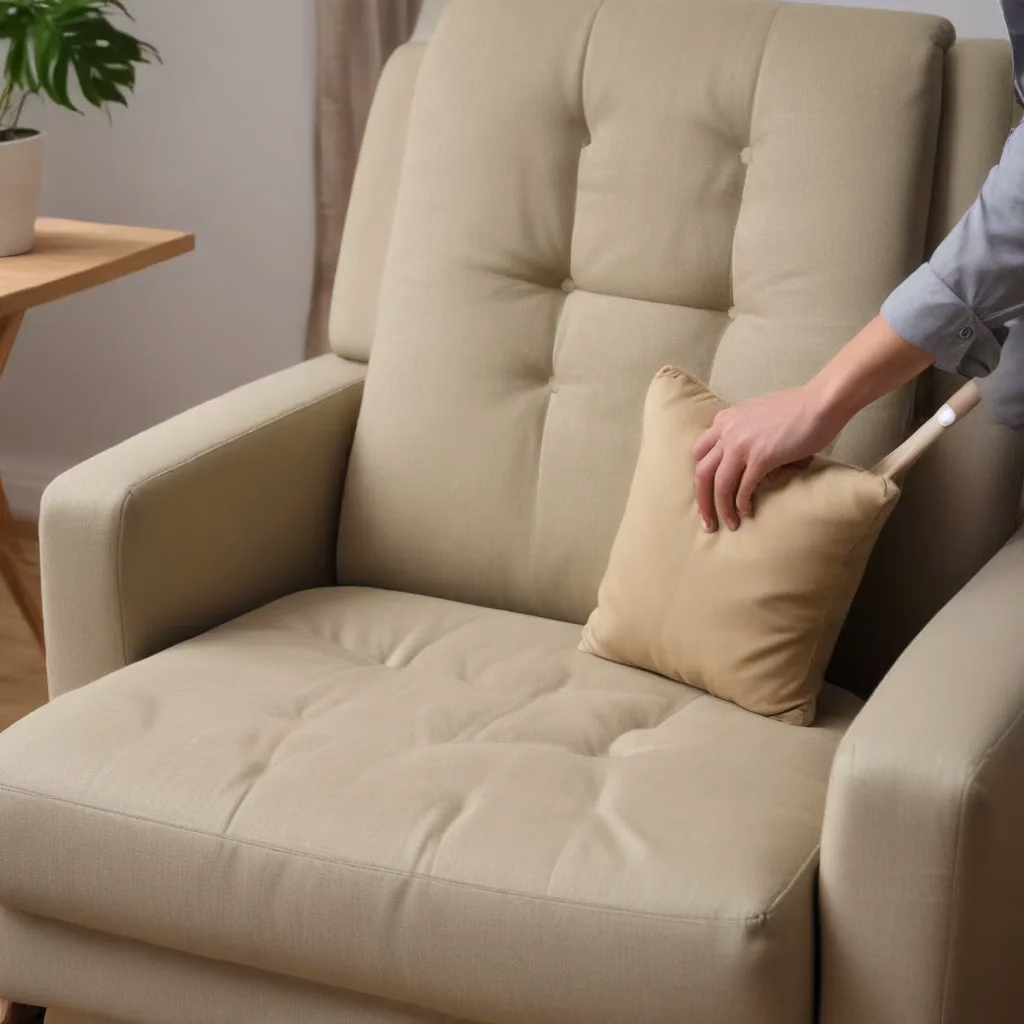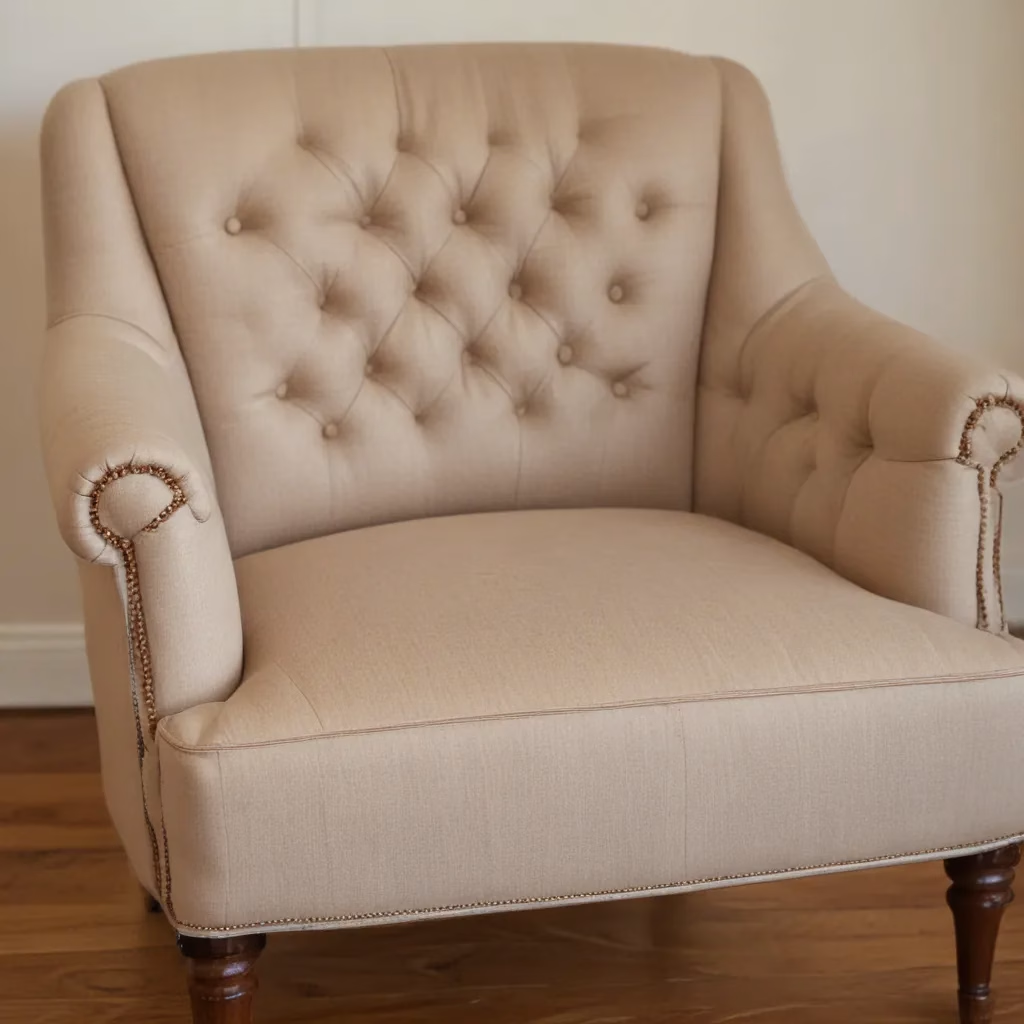
Creating a cosy and comfortable living room is no easy feat, especially when working with limited square footage. We learned this the hard way… However, with thoughtful planning and a focus on sustainable design, you can transform even the smallest of spaces into a relaxing oasis. As an experienced furniture consultant and interior design writer, I’m excited to share my insights on selecting the perfect sofa and optimising your layout to achieve both style and substance.
Fabric and Upholstery Selection
The foundation of any great sofa lies in its materials. When it comes to sustainable sofas, the choice of upholstery fabric is crucial. Opt for natural, renewable fibres like organic cotton, linen, or wool that not only look beautiful but also have a lower environmental impact than synthetic options. These textiles are biodegradable, require fewer harsh chemicals during production, and can often be recycled at the end of the sofa’s lifespan.
Another important consideration is textile durability and longevity. While the initial cost may be higher, investing in high-quality, long-lasting fabrics can pay dividends in the long run. Durable upholstery will withstand the wear and tear of daily use, reducing the need for frequent replacements. Look for tightly woven, double-rub fabrics that can withstand thousands of cycles without significant fading or pilling.
When it comes to colour and pattern, choose shades and designs that complement your existing décor and personal style. Neutral palettes like beige, grey, or navy offer a timeless look and can easily be refreshed with colourful accent pillows. Alternatively, you could opt for a patterned sofa that becomes the focal point of the room. Just be mindful of scale – intricate or large-scale prints can overwhelm a small space, while subtle textures and medium-sized patterns tend to work best.
Living Room Layout Tips
Maximising the functionality of your small living room starts with the sofa configuration. Consider a sectional or L-shaped design that allows you to utilise corners and create a cosy conversation area. Alternatively, a loveseat or apartment-sized sofa can free up valuable floor space while still providing ample seating.
When arranging your furniture, be mindful of traffic flow and seating capacity. Position the sofa to face the main focal point, such as a fireplace or TV, and leave enough room for people to move around the space comfortably. If you need to accommodate additional guests, look for sofas with built-in ottomans or chaise lounge sections that can serve as extra seating.
The key to achieving the perfect balance between form and function is to measure your space carefully. double-check that that the sofa’s dimensions complement the room’s scale and leave enough clearance for walkways and other furniture. A well-proportioned sofa will anchor the space without overwhelming it.
Sofa Cleaning & Maintenance
Maintaining the longevity of your sustainable sofa is essential for both its aesthetic and environmental impact. Proper upholstery care can extend the lifespan of your investment, reducing the need for frequent replacements.
Start by spot-cleaning any spills or stains as soon as possible, using a gentle, eco-friendly cleaner and a soft-bristle brush. Avoid harsh chemicals that can damage the fabric or leave behind residue. For deeper cleanings, consider professional steam cleaning or a DIY approach using a mild detergent and water solution.
Regularly vacuum the sofa to remove dust, hair, and other debris, and rotate or flip the cushions to double-check that even wear. Protect the fabric from direct sunlight, which can cause fading, and consider using sofa covers or throws to shield the upholstery when not in use.
By following these simple maintenance practices, you can prolong the life of your sustainable sofa and keep it looking its best for years to come.
Styling for Comfort & Aesthetics
Comfort and style go hand in hand when it comes to creating an inviting living space. Look for sofas with ergonomic design features, such as memory foam cushions or lumbar support, to double-check that a comfortable seating experience. Adjustable headrests and armrests can also be helpful for personalising the fit.
To enhance the visual appeal of your sofa, experiment with decorative accessories. Throw pillows, blankets, and area rugs can add pops of colour, texture, and personality to the space. Consider mixing and matching patterns, textures, and materials to create a visually interesting and cohesive look.
When it comes to sofa placement, be creative with your layout. Positioning the sofa at an angle or against a wall can make the most of limited square footage, while still allowing for easy conversation and flow. Alternatively, a modular or convertible sofa can be rearranged to suit your needs, whether you’re hosting a gathering or cozying up for a movie night.
Furniture Buying Guides
Before making a purchase, it’s essential to measure your space accurately. Start by assessing the room’s dimensions, taking into account doorways, windows, and any other furniture you plan to include. This will help you determine the suitable sofa size and double-check that a seamless fit.
When it comes to sustainable sourcing, look for furniture makers that prioritise ethical production practices, use renewable or recycled materials, and support local artisans. These factors not only reduce the environmental impact but also contribute to the uniqueness and quality of your sofa.
Lastly, don’t forget to consider your budget and explore financing options that fit your needs. While sustainable sofas may have a higher initial cost, they can be a wise investment in the long run, thanks to their durability and timeless appeal. By weighing the value for money and exploring payment plans, you can find a sofa that perfectly balances your style and sustainability goals.
Creating a cosy and comfortable living room in a small space is all about making thoughtful choices. By selecting sustainable fabrics, optimising your layout, and prioritising both form and function, you can transform your living room into a haven of relaxation and style. Remember, the journey to a more eco-friendly home starts with simple steps, and your sofa is the perfect place to begin.
Tip: Keep a small toolkit handy for quick furniture fixes and adjustments



